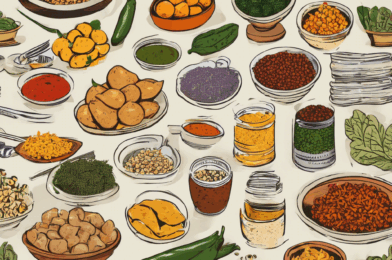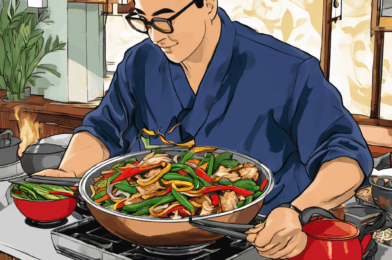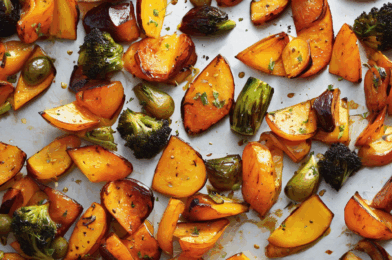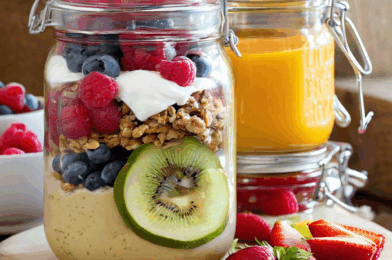Have you ever stood in your kitchen, staring at a pot of boiling eggs, wondering if they’ll turn out just right? That moment of uncertainty—will the yolks be too runny or perhaps too chalky—is a common kitchen conundrum. The humble egg, despite its simplicity, remains one of cooking’s most misunderstood ingredients. Today, we’re cracking the code on achieving perfect boiled eggs every single time.
Why Mastering Egg Boiling Matters
Eggs serve as nutritional powerhouses, packed with quality protein, essential vitamins, and minerals. When prepared correctly, they transform from basic breakfast fare into versatile culinary components that enhance countless dishes. From protein-rich breakfast options to salad toppers and everything in between, a well-boiled egg elevates your meal from ordinary to extraordinary.
The ability to consistently achieve your preferred level of doneness—whether that’s the golden-centered soft-boiled egg or the firm, no-nonsense hard-boiled variety—remains an essential kitchen skill that pays dividends in meal quality and preparation confidence.
Understanding Egg Anatomy: The Science Behind Perfect Boiling
Before diving into techniques, let’s briefly explore what actually happens when you boil an egg. This understanding will help you troubleshoot and adjust your approach for consistently perfect results.
The Transformation Process
When heat penetrates the eggshell, it causes proteins within both the white and yolk to undergo structural changes. At approximately 145°F (63°C), the egg white begins solidifying. The yolk, with its different protein makeup, requires higher temperatures of around 158°F (70°C) to start firming up.
This temperature differential explains why achieving that perfect soft-boiled egg—with firm whites but creamy yolks—requires precise timing. The heat must penetrate far enough to fully set the whites while only partially cooking the yolk.
Freshness Factors
The age of your eggs significantly impacts boiling results:
- Fresh eggs: Typically feature tightly bound inner membranes that make peeling difficult but hold their shape beautifully when soft-boiled
- Older eggs (7-10 days): Develop air pockets that facilitate easier peeling, making them ideal candidates for hard-boiled preparations
Essential Equipment: Setting Yourself Up for Success
Success begins with proper preparation. Gather these basic tools before starting:
- A saucepan with a tight-fitting lid (preferably heavy-bottomed for even heat distribution)
- A slotted spoon for gentle egg retrieval
- A timer or stopwatch for precise timing
- A bowl of ice water for the cooling shock (stops the cooking process immediately)
The 5-Minute Method: Your Universal Egg-Boiling Approach
Now, let’s get to the heart of egg mastery—a versatile approach that allows you to achieve any level of doneness by adjusting just one variable: time.
Step 1: Room Temperature Readiness
Remove eggs from refrigeration about 20 minutes before cooking when possible. Room temperature eggs are less likely to crack when introduced to hot water due to reduced thermal shock. If you’re short on time, don’t worry—the method still works with cold eggs; just be extra gentle when adding them to the water.
Step 2: The Perfect Starting Point
Fill your saucepan with enough water to cover the eggs by about an inch. Bring this water to a full, rolling boil. Some chefs add a teaspoon of vinegar to the water, which helps coagulate any whites that might escape from cracked shells, though this step remains optional.
Step 3: The Gentle Entry
Using a slotted spoon, carefully lower eggs into the boiling water. Lowering them gently rather than dropping them reduces the risk of cracking. For extra insurance against cracks, consider piercing the wider end of each egg with a pin before boiling—this releases built-up air pressure.
Step 4: Time-Based Customization
Once eggs enter the water, immediately reduce heat to maintain a gentle simmer rather than a vigorous boil. This prevents eggs from bouncing around and cracking. Now, set your timer based on your desired outcome:
- Ultra-soft boiled (liquid center): 4 minutes
- Soft-boiled (jammy center): 5-6 minutes
- Medium-boiled (mostly firm with slight creaminess at center): 7-8 minutes
- Hard-boiled (fully set but moist): 9-10 minutes
- Extra firm hard-boiled: 12 minutes
Step 5: The Crucial Cool-Down
When your timer sounds, immediately transfer eggs to the prepared ice bath. This “shocking” process stops residual cooking and makes peeling significantly easier. Allow eggs to cool for at least 5 minutes before attempting to peel.
Troubleshooting Common Egg Boiling Challenges
Even with perfect technique, challenges occasionally arise. Here’s how to address the most common issues:
The Dreaded Green Ring
Have you ever noticed an unappetizing grayish-green ring around the yolk of your hard-boiled eggs? This occurs when iron in the yolk reacts with hydrogen sulfide from the white during extended cooking or inadequate cooling. To prevent this:
- Avoid overcooking—stick to the recommended times above
- Never skip the ice bath cooling step
- Don’t leave eggs in hot water after cooking completes
Stubborn Shell Syndrome
Few culinary frustrations compare to eggs that refuse proper peeling, leaving you with pitted, unattractive results. Improve your peeling success by:
- Using slightly older eggs for hard-boiling
- Ensuring adequate ice bath cooling (minimum 5 minutes)
- Gently cracking the shell all over by tapping against a hard surface
- Starting your peel from the wider end, where the air pocket creates natural separation
- Peeling under running water for easier membrane removal
Inconsistent Results
If your eggs show varying doneness despite identical cooking times, consider these factors:
- Size variations: Larger eggs naturally require longer cooking times
- Starting temperature differences: Eggs from different parts of your refrigerator might have temperature variations
- Hot spots in your pan: Ensure even heat distribution with a quality pot
Elevating Your Egg Game: Creative Serving Suggestions
Once you’ve mastered perfect boiling, explore these serving ideas across the doneness spectrum:
Soft-Boiled Delights
- Serve in egg cups with buttered toast soldiers for dipping
- Halve and place atop avocado toast with a sprinkle of everything bagel seasoning
- Add to ramen or udon noodle bowls for protein-rich enhancement
- Slice over asparagus with hollandaise for a simplified eggs benedict experience
Medium-Boiled Magic
- Incorporate into grain bowls with roasted vegetables
- Chop into warm potato salad with grainy mustard dressing
- Slice for open-faced sandwiches with quality bread and microgreens
- Add to fresh green salads for protein boost
Hard-Boiled Heroes
- Classic deviled eggs with endless flavor variations
- Egg salad with herbs and quality mayonnaise
- Sliced into chef’s salads or cobb salads
- Pickled in beet juice for vibrant color and tangy flavor
Storing Your Perfectly Boiled Eggs
Proper storage extends the life of your perfectly boiled eggs:
- Keep shells intact until ready to use for maximum freshness
- Store unpeeled eggs in a covered container in the refrigerator for up to one week
- Peeled eggs should be consumed within two days for best quality
- Never freeze boiled eggs—the whites become rubbery and unappetizing
Nutrition Benefits: Why Boiled Eggs Deserve Regular Rotation
Boiled eggs offer numerous nutritional advantages worth considering:
- Complete protein: Containing all essential amino acids
- Nutrient density: Rich in vitamins A, D, E, B12, riboflavin, and folate
- Brain health: Choline content supports cognitive function and development
- Eye health: Lutein and zeaxanthin help protect against age-related macular degeneration
- Weight management: High satiety factor keeps hunger at bay
Beyond Basic Boiling: Advanced Egg Techniques
Once you’ve mastered basic boiling, consider these advanced approaches:
Steam Method
Some chefs prefer steaming eggs rather than submerging them in water. This method reduces the risk of cracking and may produce more evenly cooked results:
- Add an inch of water to your pan and bring to a boil
- Place eggs in a steamer basket above the water
- Cover and steam according to your preferred doneness times
- Transfer to ice bath as with the standard method
Baked “Boiled” Eggs
For large batches, try oven-baking:
- Preheat oven to 325°F (165°C)
- Place eggs directly on oven rack or in muffin tins
- Bake for 30 minutes for hard-boiled equivalent
- Transfer to ice bath immediately after removing from oven
Frequently Asked Questions
Q: Can I make boiled eggs at high altitude? A: Yes, but you’ll need to increase cooking time. At elevations above 3,000 feet, add approximately one minute for soft-boiled and 2-3 minutes for hard-boiled eggs.
Q: How can I tell if an egg is fully cooked without cracking it open? A: Try spinning the egg on a flat surface. Hard-boiled eggs spin easily and quickly; undercooked eggs wobble due to the liquid center affecting balance.
Q: Are brown eggs different from white eggs when boiling? A: No, shell color makes no difference in cooking time or method. The variation relates solely to the breed of chicken that laid the egg.
Q: What about using an Instant Pot or pressure cooker? A: These tools work wonderfully! Use the “5-5-5” method: 5 minutes cooking at high pressure, 5 minutes natural release, 5 minutes in an ice bath.
Conclusion: The Joy of Egg Mastery
Perfecting boiled eggs might seem trivial, but this fundamental cooking skill delivers outsized rewards. With minimal investment of time and attention, you’ll gain the confidence to prepare eggs exactly to your preference every single time.
The next time you’re considering a quick, nutritious addition to any meal, remember that perfect eggs are just five minutes away. Experiment with various cooking times to discover your personal preference, and don’t hesitate to get creative with serving options.
Your journey to egg mastery has just begun—what delicious discoveries await as you apply these techniques in your kitchen adventures?






